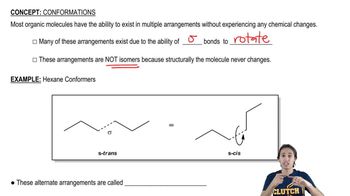Textbook Question
Which of the following pairs of compounds could be separated by recrystallization or distillation?b. and
 Verified step by step guidance
Verified step by step guidance Verified video answer for a similar problem:
Verified video answer for a similar problem:



 3:51m
3:51mMaster Determining when molecules are different. with a bite sized video explanation from Johnny
Start learning